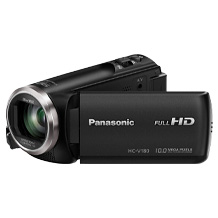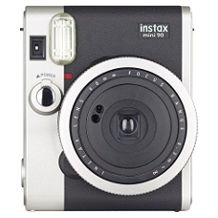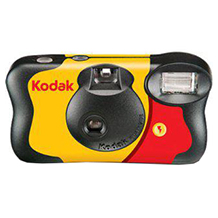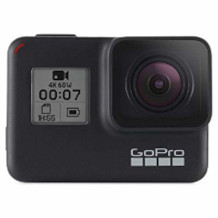SLR purchasing advice: how to choose the right product
- What You Need to Know
- SLR cameras are no longer just for professionals: beginners and occasional users can also find the right model for their needs at a small price.
- In contrast to its analogue version, the digital SLR camera is equipped with a large image sensor that enables a particularly high image quality.
- The advantage of a DSLR lies in the combination of a viewfinder and a digital display, which always gives users the choice of how to aim at their subject.
- Since customers who buy a DSLR initially only purchase the body and basic equipment, they automatically commit to the system of a certain manufacturer when it comes to accessories.
- Additional features such as various interchangeable lenses or an accessory shoe for attaching flash units, lamps and the like provide a great deal of flexibility.
SLR cameras: professional-level photography
Whether it’s a mountain landscape on a trip to Scotland, a beach party by torchlight or your favourite team’s winning goal – with a smartphone or compact camera you can quickly capture the beautiful moment. When looking at the pictures, however, it is not uncommon to find that the quality is anything but satisfactory: they are blurred, out of focus or overexposed. If you always want to achieve high image quality when taking photos, you will ultimately only find the right tool in a high-quality camera. With an SLR camera, ambitious amateur photographers as well as professionals can master any shooting situation. In the meantime, SLR cameras are not only more widespread, but also far more affordable than they were a few years ago.
How a reflex camera works
The SLR camera got its name because of the built-in mirror. It is often referred to as DSLR or DSR (digital single-lens reflex). The abbreviation DSLR stands for “Digital Single Lens Reflex”: “Digital” in the sense of the digital camera, “Single Lens” because there is only one lens inside the camera, and “Reflex” in reference to the mirror that reflects the light – in contrast to the DSLM (“M” stands for “Mirrorless”).
Both externally and mechanically, SLR cameras resemble their analogue versions – with one crucial difference: instead of film, DSLR cameras harbour a large electronic image sensor inside, making the image material immediately available. This is much larger than with a digital camera. If necessary, unsuccessful shots can be corrected or repeated with an image editing programme. Apart from that, the mode of operation is identical:
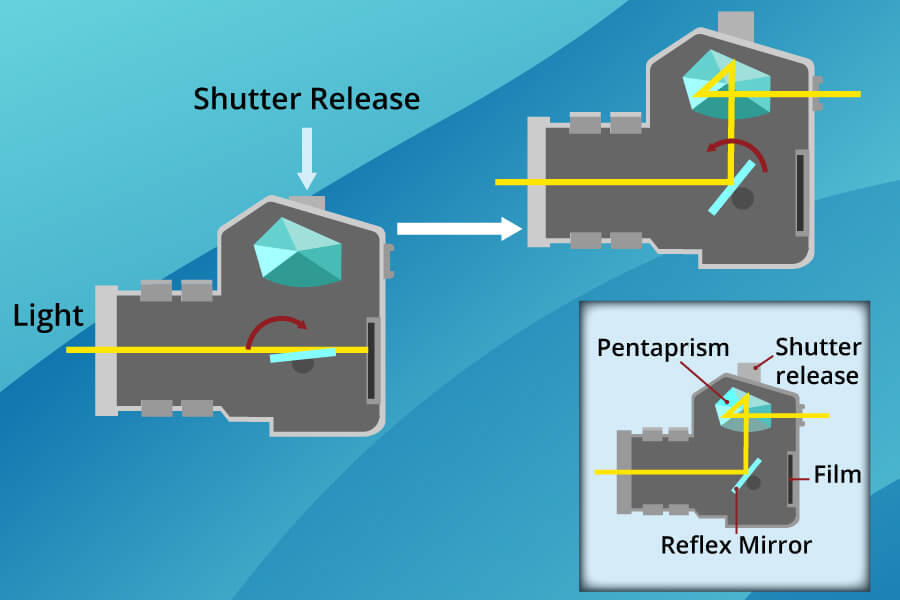
- The mirror is used to display the targeted image in the optical viewfinder.
- As soon as the user presses the shutter release button, the mirror flips up, the shutter opens and the light falls on the sensor, which converts the light into digital values.
- After the exposure time has elapsed, the shutter closes again and the mirror folds down. The viewfinder image remains dark during the exposure phase and is only displayed again when the mirror is back in its original position.
The queen of cameras: advantages of a DSLR
SLR cameras, the premium class among cameras, are distinguished from classic digital cameras not only by their outstanding image quality. The wide range of functions offers a lot of creative freedom. But what exactly distinguishes the DSLR from its two most persistent competitors, the compact and system cameras?
Without much fuss: the compact cameras
Compact cameras are usually small and lightweight (with the exception of bridge cameras), so they can be stowed in any pocket. Since they have a comparatively small range of functions and the camera’s automatic system does most of the work, they are usually very easy to operate. Unlike SLR cameras, the subjects are not viewed through an optical viewfinder, but through a digital display. Due to their small image sensor, they also have a lower resolution. Therefore, most compact cameras quickly reach their limits, especially in low light. Unlike DSLR cameras, whose interchangeable lenses can be adapted to different situations, compact cameras also have a fixed and therefore non-interchangeable lens.
So if you just want to capture a few holiday memories or the occasional family celebration without having to worry about complicated settings, a compact camera is a good choice. In the meantime, even professionals swear by compact cameras and their advantage of a fixed focal length. Ambitious hobby photographers, however, who have a certain amount of basic knowledge and pay more attention to image quality and setting options, can hardly avoid buying an SLR.
The system camera: big technology in a small body
There are two different types of system cameras: the SLR and the mirrorless system camera, or DSLM (Digital Sigle Lense Mirrorless). Although they are somewhat larger and heavier than compact cameras, they are a handy alternative to SLR cameras. Thanks to their larger sensors and interchangeable lenses that deliver optimal image results, they now rival DSLR cameras. However, the choice of lenses for system cameras is still smaller than for SLRs.
System cameras are more compact, which makes them ideal for travelling, but they do not have the mirrors and optical viewfinder that are characteristic of DSLR cameras. On the whole, they are comparable to DSLRs in terms of quality and flexibility. However, if you value components such as autofocus or shutter speed, you are better off with a DSLR camera.
The pros and cons of a DSLR camera
For anyone who is primarily concerned with image quality, there is no way around the SLR camera. However, consumers have to dig deep into their pockets. The following overview of advantages and disadvantages shows whether the purchase costs are really worth it:
Fast flash, flexible and top picture quality: the advantages of a DSLR
Digital single-lens reflex cameras offer users two options for targeting a subject: In addition to the typical display, they also have an optical viewfinder. With a DLSR, the user can easily take good photos even in bright light. These devices also have a nostalgic flair. The digital display offers the possibility to check the quality of the picture once again.
While automatic cameras in the lower segment now have sensors similar in size to smartphones, the sensors in DSLRs have a higher resolution than other digital cameras thanks to their size. Digital SLRs can show more detail and are also extremely sensitive to light, so they deliver solid image quality even in low light conditions, such as at dusk. Due to the large sensor, the depth of field is shallow. The powerful autofocus also enables good shots even with moving subjects thanks to the short delay time.
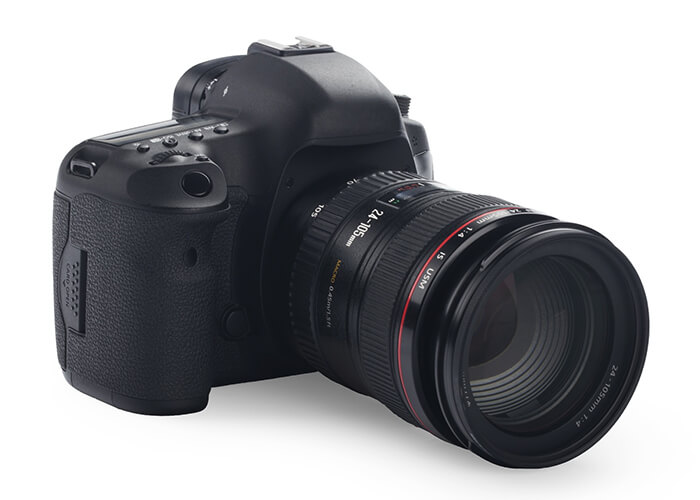
The advantage that sets SLR cameras apart from all other cameras is undoubtedly their features. Besides the large image sensor, they impress with numerous programmes such as exposure bracketing, aperture bracketing, focus bracketing and time lapse. With them, DSLR cameras can be used in a variety of ways and the photographer always retains control over the image and the exposure. So that even amateur photographers can take very good snapshots, DSLR cameras are also equipped with a number of fully and semi-automatic functions. If you can’t cope with the extensive range of functions, you can simply let an automatic programme take care of the settings.
If the basic equipment is not enough, users simply fall back on the extensive range of accessories – from filters to interfaces to remote control options. With their expansion options, DSLR cameras are almost universally applicable. Users particularly appreciate the ability to exchange lenses. Interchangeable lenses are usually not only faster and thus of better optical quality than fixed lenses, but also offer great flexibility in the choice of focal length, so that they can be adapted to the respective subject, be it a landscape or a portrait. In addition to zoom lenses, it is also possible to connect powerful system flash units to expand the creative scope.
Since users of an SLR prefer to frame the image through the viewfinder, which requires no power, the battery lasts correspondingly longer than with cameras equipped only with a display. Their ergonomic shape also lies well in the hand and the comfortable grip allows optimal operation. Another advantage: the devices are particularly robust and stable.
Bulky, expensive and dust-prone: the disadvantages of a DSLR
For all their advantages, DSLRs also have one or two disadvantages. The price of a DSLR, for example, is much higher than that of a system or compact camera. In addition, depending on your needs, you may have to buy various accessories such as interchangeable lenses or an external flash. Manual settings also require a certain amount of training and testing. Although their size makes them easy to hold, the weight should not be underestimated, especially when travelling. The interchangeable lenses, which are obligatory for the full range of uses, require a lot of space and are an additional burden. So unlike compact cameras, DSLRs don’t fit in a jacket pocket. Since dust and dirt can enter the housing in the course of changing lenses and settle on the focusing screen or sensor, there is always the risk of small spots on the photos.
Overall, the advantages of a reflex camera outweigh the disadvantages. Below, we have listed the most important advantages and disadvantages in brief:
Pro Points
- Optimal image quality thanks to large sensors
- Flexibility thanks to interchangeable lenses
- Wide range of settings
- Long battery life
- Ergonomic shape
Drawbacks
- High purchase and follow-up costs
- Comparatively large and heavy
- Complex manual operation
The right DSLR for beginners, advanced photographers and professionals
When you choose a DSLR, you are also choosing a manufacturer’s system. With the camera, consumers initially only buy the body. Essential accessories such as interchangeable lenses or flash units must be purchased separately. As a rule, the products of different manufacturers are not compatible because they have developed their own connections, so the choice of DSLR should be carefully considered. Most photographers not only choose the appropriate accessories, but also usually go back to the same company when buying their next camera.
The leading manufacturers of SLR cameras include:
- Canon: The Japanese company is currently particularly popular because of its EOS series, whose nuanced graded spectrum ranges from entry-level models to professional devices. Aimed at beginners, for example, is the EOS 1200D Kit 18 – 55 mm. Advanced photographers, on the other hand, are better off with the EOS M 3 with Hybrid CMOS AF III.
- Nikon: The company, which also comes from Japan, initially specialised primarily in the professional sector, but now also offers some cameras for beginners. The D series in particular promises optimal image quality and a lot of creative freedom. Examples are the models D 3300 Kit 18 – 105 mm and D 750 Kit 24 – 120 mm.
- Sony: The electronics company from Japan has recently expanded its product range. Formerly focused on consumer electronics, there are now several SLR cameras in the repertoire. The latest models in the popular Alpha series include, for example, Sony Alpha 77 M 2 Kit 16 – 50 mm.
- Hassalblad and Pentax are mainly represented in the professional sector. Top products include, for example, the Pentax K-S1 Kit 18 – 55 mm or the Hasselblad HV Kit 24 – 70 mm.
From simple to high-end: What does a DSLR cost?
The price of DSLR cameras depends on the intended use and the equipment. Models in the professional sector can quickly reach four-digit prices. Which DSLR suits the different requirements of beginners, advanced users and professionals is illustrated by the division into the following price categories:
DSLRs for beginners and occasional users
Beginners and occasional users need their camera mainly for a few nice holiday photos or snapshots at a birthday party. Those who want to reach for well-known brands like Nikon, Canon and Co. spend up to 700 euros even for an entry-level SLR camera. To attract customers, however, some manufacturers also offer bargain models starting at 100 euros. These are worthwhile for all those who do not want to do without razor-sharp photos on holiday, but fear that their camera will be stolen and therefore do not want to spend a fortune.
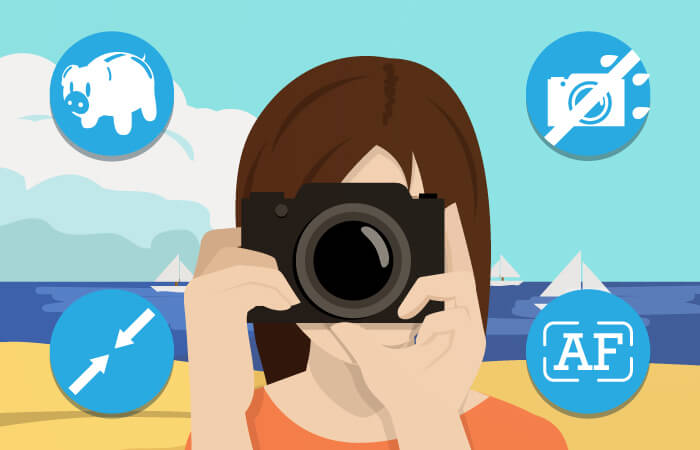
Entry-level models are often not as big and heavy as professional models. The camera housing is usually not protected against splash water. Most manufacturers save on features. This means they only use a simple autofocus module with few sensors (like the Canon EOS 2000D with only nine AF sensors), design the viewfinder smaller and keep the continuous shooting speed low. Less noticeable are the differences in terms of image quality, as even beginner models usually have a 24-megapixel sensor. Ultimately, the most important thing is that the camera is easy to operate so that beginners can get to grips with it quickly. Practical for beginners: the Nikon D3400 has a guide mode that explains in detail which automatic is suitable for which motif.
DSLRs for ambitious amateur and advanced photographers
If a hobby photographer has been working with his camera for a long time and his demands gradually increase, he will quickly reach his limits with his beginner model. The main focus should therefore turn away from the price and towards the quality of the camera. If you invest more in a new SLR camera, it will last longer. After all, ambitious photographers use their camera more often than the typical casual user.
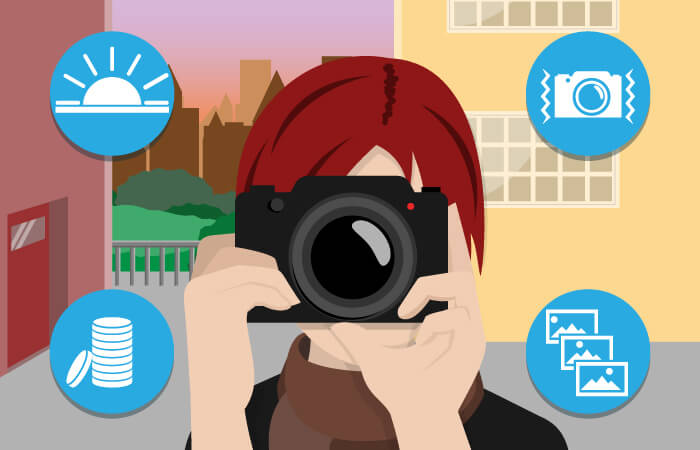
Mid-range DSLRs cost between 700 and 1,500 euros. These DSLRs for semi-professional use are heavier and more robust than entry-level models. Thanks to fast continuous shooting and higher light sensitivity, they are also suitable for twilight photography. Mid-range DSLRs are also equipped with other useful features that give their users more creative freedom.
DSLRs for professionals and luxury enthusiasts
If you use your camera every day, for example in your job, you should opt for a high-quality model. SLR cameras in the professional class are available from 1,500 euros. Their housing is particularly robust, stable and usually splash-proof. Thanks to special seals and magnesium alloys, they are not only weatherproof but also more durable. Furthermore, professional DSLRs are characterised by a very fast continuous shooting function of at least ten frames per second, numerous setting options, larger monitors and a considerable amount of accessories.
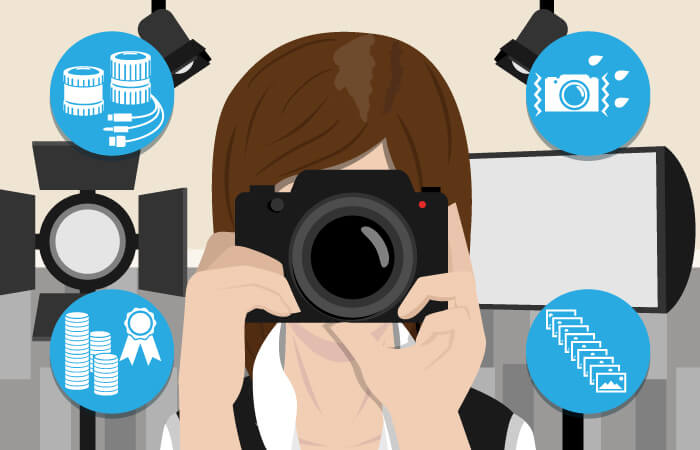
Their autofocus technology is faster and more accurate with numerous measuring fields. ISO values can be set higher without the user having to fear that the image will be noisy. While inexpensive models average only ISO 1,600, professional models manage up to ISO 3.2 million. While the body of some cameras costs up to 6,500 euros, there are affordable alternatives with APS-C sensors. Examples from the professional sector are the extremely fast and high-resolution Nikon D500 and Canon EOS 7D Mark II. If you use your camera more for landscape, portrait or product photography, you should opt for a DSLR with full format, which allows you to take more detailed and less noisy pictures. A bargain in this area is the Pentax K-1.
Size matters: The sensor
Unnecessary pixel madness
The number of pixels on the sensor says nothing about its quality. In general, the larger the image sensor, the more pixels it can have. A small sensor would lose quality if it had too many pixels, which would not only result in image noise but also in a loss of speed.
The heart of every SLR camera is the sensor. This consists of many small light-sensitive photo cells that convert the incident light into electrical voltage. Compared to the image chip of compact cameras, a DSLR has a sensor that is almost five times as large, which enables a higher image quality. The larger the sensor, the better the light yield and the lower the susceptibility to noise – and the higher the price. The images are sharper and more detailed. Even in candlelight, the images are still solid. Depth of field can also be used to emphasise a subject by blurring the background.
The most common types include the APS-C sensor, the Micro Four Thirds sensor and the full-frame sensor. But what are the advantages and disadvantages of the different sensor formats?
Micro-Four-Thirds sensor

The 17.3 by 13 millimetre sensors are a compromise between size and performance. Since they are slightly smaller than the APS-C versions, the housing is also more compact. Behind this is a standard that is mainly used by the camera manufacturers Panasonic and Olympus. The name refers to the aspect ratio of four to three compared to full format. This means that not only a 3:2 and a 16:9, but even a square image format can be realised. The standard calls for almost telecentric lenses, in which the light falls perpendicularly on the microlenses, which improves the light yield. The lenses come even closer to the sensor, which is particularly advantageous for automatic focusing. At higher ISO settings, however, users must expect loss of detail.
APS-C sensor

The APS-C sensor is mainly used in inexpensive entry-level SLR cameras. The abbreviation stands for “Advanced Photo Service”; the “C” refers to “Classic”, i.e. 35mm. Depending on the manufacturer, the sensor size is between 14.9 x 22.3 and 15.6 x 23.5 millimetres, which makes the APS-C sensor 1.4 to 1.6 times smaller than the full-frame version. Users have to convert the focal length: A 50-mm standard focal length on an APS-C sensor corresponds to a 75-mm telephoto on a 35 mm camera, for example. The image section is therefore smaller, which makes it seem as if you are closer to the subject. This is especially problematic when taking portraits. One of the advantages is that the lenses are much more compact.
Full-frame sensor

With a size of 36 x 24 millimetres, this is the royal class of sensors, which is mainly found in professional SLR cameras. Its dimensions correspond to 35 mm film exposures. The large sensor area promises higher resolutions with full image quality. The full format captures more of the image than the other versions, which means it is wider-angled, making portraits more successful. Larger pixels always mean more space for image information. The images appear sharper and more detailed, the colours more natural. Furthermore, the depth of field is shallower, which allows for steep blur transitions. Although full-frame sensors are particularly low-noise and light-sensitive, they are also correspondingly expensive. In addition, the housing is larger and heavier due to the use of glass.
Resolution, aperture and co.: the technical features
To be able to offer excellent image quality, the DSLR camera must have a number of technical features. Beginners in particular find it difficult to cope with the sheer endless list of features. After all, resolution and sharpness are not everything. So what other criteria are important when buying?
10, 20 or 50 megapixels? The resolution
The usual resolution of a reflex camera is between 18 and 24 megapixels. It allows prints with dimensions of up to 100 x 66 centimetres at a pixel density of 152 dots per inch. Thanks to the large image sensors, even DSLRs with a low pixel count still produce razor-sharp images. In dim lighting conditions, a reduced resolution is even an advantage, as the individual pixels on the sensor are larger.
However, the area of the sensor is limited, so it makes a difference whether there are 18, 24 or 50 megapixels on this area. Too many pixels lead to misinformation being displayed, which is also known as image noise. Professional models with full-frame sensors are even equipped with up to 50 megapixels.
Pixel – What is that actually?
The term pixel is made up of the words “pictures” and “element”. A pixel is between 1.5 and 30 micrometres in size. A megapixel is one million pixels. A resolution of 2,000 x 2,000 pixels therefore corresponds to four megapixels.
The individual pixels, also called image points, absorb the light and store it, which ultimately creates the image. The more megapixels a camera has, the higher the resolution and the more detailed the image. With a higher megapixel count, even larger photo prints are sharp and not grainy. For posters and canvases, the camera needs between 24 and 36 megapixels, but for conventional photos only 10 to 20 megapixels. Some SLR cameras even offer the option of specifying how high the resolution of the photos should be. This is particularly practical when there is not much storage space available. A higher resolution requires more memory.
Let there be light: the aperture
The word “photography” comes from the ancient Greek and means nothing other than “to paint with light”. The aperture, with which users regulate the incidence of light, therefore plays a decisive role for the camera. They use it to determine how much light enters the camera or the sensor. To do this, photographers increase or decrease the aperture opening, whereby large aperture values such as 22 require a small opening window, while small aperture values, such as 2.8, require a small opening. For good results, a value of 16 is quite sufficient.
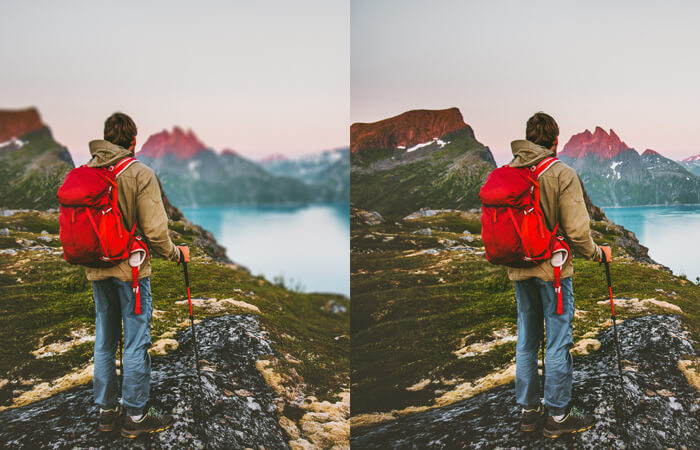
In connection with the aperture, the so-called depth of field is also relevant. If you shoot with a small aperture number, you also create a shallow depth of field. This blurs the background and brings the intended subject into focus. Conversely, users with a high f-number will also bring distant objects into sharp focus. High f-numbers are therefore mainly used in landscape photography.
Caution, risk of camera shake: the exposure time
Exposure time, also known as shutter speed, is the time during which the sensor is supplied with light from the mirror. With this function, users manually regulate how much light the picture should be illuminated. The longer the shutter speed, the longer the aperture remains open and the brighter the image. The duration of the shutter speed is given in seconds. With an exposure time of one thousandth of a second (1/1,000), for example, the SLR camera releases the image very quickly. This speed is mainly used in sports photography to capture moving subjects. Longer exposure times, on the other hand, are more suitable for dynamic subjects such as flowing water.
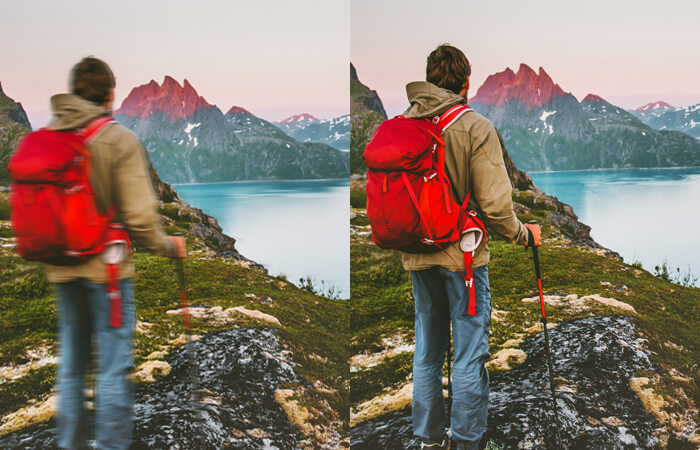
Most DSLRs offer shutter speeds between 1/400 second and 30 seconds, with values of 1/50 to 1/200 second being common. Depending on the shutter speed, the shot will look sharp or blurred. With a faster shutter speed – at least without the use of a tripod – the risk of the photo becoming blurred increases.
ISO values and image noise: Light sensitivity
The light sensitivity, a property of the sensor, also influences the exposure time: the higher the value, the more light-sensitive the camera is and the shorter a subject has to be exposed to be bright enough. A high ISO value can therefore reduce the exposure time. Usually, the light sensitivity of SLR cameras is between ISO 100 and 16,000, but values above 50,000 are also possible. High ISO values (over 800) are particularly useful in poor light conditions, for example at dusk. For outdoor shots on sunny days, on the other hand, an ISO value of 100 to 200 is quite sufficient.
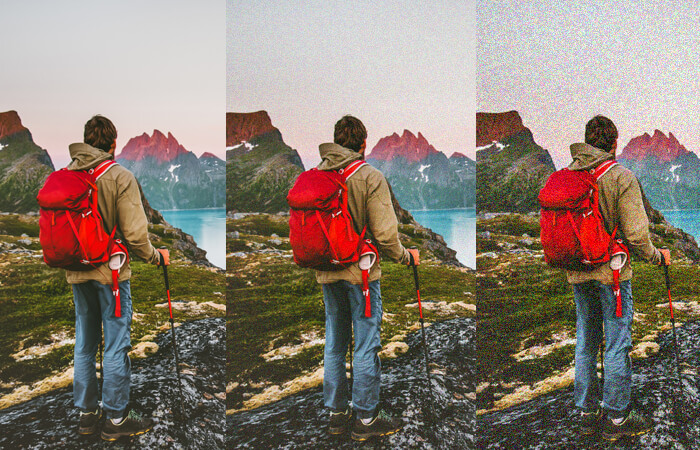
Although bright photos are possible with a high ISO number even in poor lighting conditions, this is always an artificial modification of the image brightness. This means that the image looks grainy and image noise is visible. The higher the ISO value, the more pixelated the image appears. At values up to 1,600, however, photographers need hardly expect any loss of quality. While the selectable ISO values for entry-level models form a half-step system (ISO 100, ISO 200, ISO 400), finer gradations of ISO 50 or 125 are possible with professional SLR cameras.
Viewfinder vs. display
In contrast to an ordinary digital camera, an SLR camera has both a viewfinder and a display. The optical viewfinder is a device for focusing on a section of the image, usually located above the lens. The advantage of an optical viewfinder is that photographers have a more realistic feel for the subject. Since they are not distracted by peripheral vision (seeing around the subject), they can better concentrate on the subject of their choice. Usually, the contrast in the viewfinder image is higher in the case of bright ambient light than on the display, which is shielded on the back. High-quality SLR cameras have a viewfinder display with integrated dioptric compensation, which is ideal for people who wear glasses. The diopter can be adjusted with a small wheel.
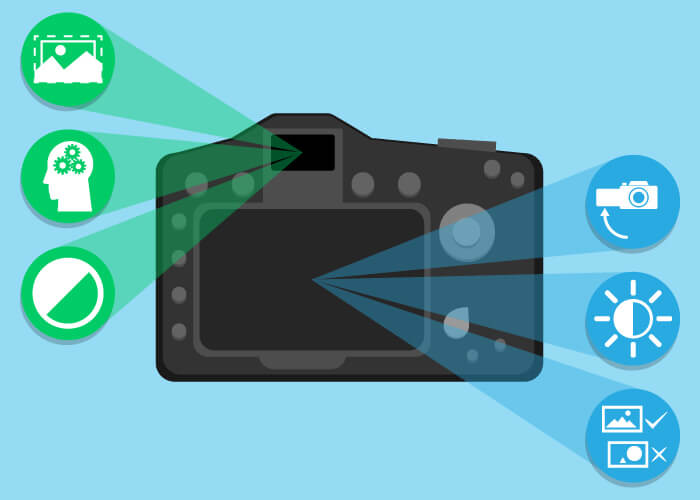
In addition, it is possible to control the viewfinder image via an electronic display. The so-called Live View displays the subject in real time on the screen. The display is either fixed on the back of the camera, can be folded vertically or swivelled in all directions. A swivelling screen also allows unusual viewing angles and thus increases comfort when taking pictures. As a rule, it has a screen diagonal of 2.5 to 3 inches, which corresponds to about 6.4 to 7.6 centimetres, so that the user can easily judge whether the shot photo is successful. The larger the screen, the more details are visible. The display should also be sufficiently bright; in the best case, the brightness can be adjusted depending on the lighting situation. If it is a touch-sensitive display, i.e. a touchscreen, the focus point can be easily set with the finger.
Faster is better: the recording speed
Especially for sports and action shots, the speed of the recording is crucial to get sharp images. The following applies here: the more pictures the camera shoots per second, the better. So it’s not just a quick readiness for action that matters, but also the speed at which the shutter is released. High shooting speeds of up to 85 megabytes per second enable faster exposures.
In this context, the continuous shooting speed is also important, which should be around ten images per second. This indicates how many pictures the camera can take per second while users hold down the shutter button. A faster continuous shooting speed increases the likelihood that there will be a successful photo among the shots. A responsive camera is an advantage, for example, when the child is jumping on the trampoline and the parents want to capture the exact moment when he or she is in the air.
Intuitive and easy to grip: handling
The ease of use of an SLR camera is especially important for beginners who still have to learn to cope with the mass of setting options. In the best case, the operation is intuitive, but at the same time offers professionals the possibility to make manual settings nimbly. All controls should be easy to reach, the most important menu items quickly accessible. The feel of the camera is also important: for comfortable handling, it is important that the camera fits comfortably in the hand.
To optimise comfort of use, the housing often has a rubber coating. Most entry-level models are made of plastic, while professional devices are made of magnesium, a resistant and at the same time lightweight metal. High-quality DSLRs are also sealed against dirt, water and dust, for example to prevent malfunctions on the image sensor.
Focus correctly: The autofocus
The autofocus ensures the best possible image quality even in very fast continuous shooting or in poor lighting conditions. It automatically adjusts the distance to the targeted object or focuses. To get sharp photos even with moving objects, the autofocus should be as precise and fast as possible.
There are two different types: one-time autofocus and continuous autofocus. While the one-time autofocus is more suitable for still subjects, the continuous autofocus is used for moving objects. The difference is that with the former, users half-press the shutter button themselves to focus the camera, whereas with the latter, they can concentrate on the subject as the camera automatically controls the focus.
Prepared for anything: The additional equipment
Users can equip their DSLR with numerous useful additional features, but it is also the additional features that have a decisive influence on the handling of the DSLR. But which additional features are really important?
The image stabiliser

An integrated image stabiliser helps to prevent blurred pictures even with long exposure times, strong zoom and freehand shots. It is especially useful for beginners. A distinction is made between an optical image stabiliser in the lens, where the lens counteracts shaking, and a mechanical image stabiliser in the camera body, which allows the sensor to vibrate to compensate for movement. The longer the focal length, i.e. the more zoomed in, the more likely the image will be blurred. As a rule of thumb, the exposure time must not exceed the reciprocal of the focal length used. For example, if the focal length is 35 millimetres, the exposure time should not exceed 1/35 second.
The flash shoe
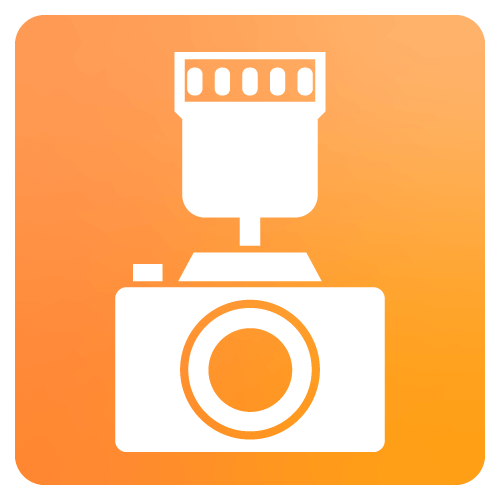
A flash shoe, also known as an accessory shoe, allows users to connect not only an external flash unit, but also lamps, remote releases and rangefinders. This special socket or shoe enables simultaneous flashing and triggering of the camera shutter. The device is U-shaped and made of metal. In the middle is the attachment point for the various additional devices.
The GPS function
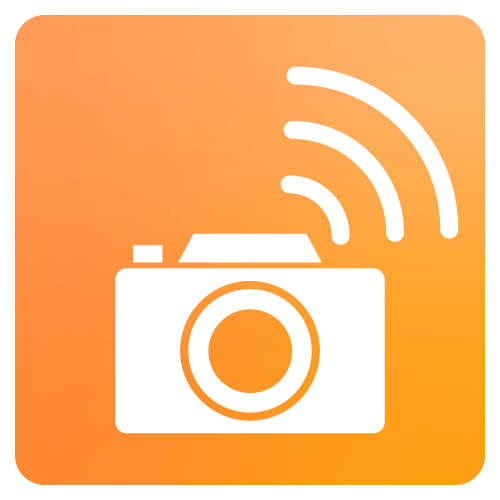
A GPS function enables so-called geotagging: The device provides the image files with metadata on the respective location of the shot. The DSLR stores the coordinates of the location where the picture was taken and the names of cities and special places as text. Image editing programmes evaluate the coordinates and mark the location on a map, for example to create a holiday diary.
HDMI and USB input

An HDMI port allows the camera to be connected to a control monitor or a TV so that the user can see the photos on a large screen. An integrated USB port is mainly for charging the camera on the go, for example in the car or when travelling, without having to carry an additional charging cable. In addition, the SLR camera can be connected to a PC via the USB port so that the user can transfer the pictures taken to his or her hard drive.
NFC, WLAN and Bluetooth
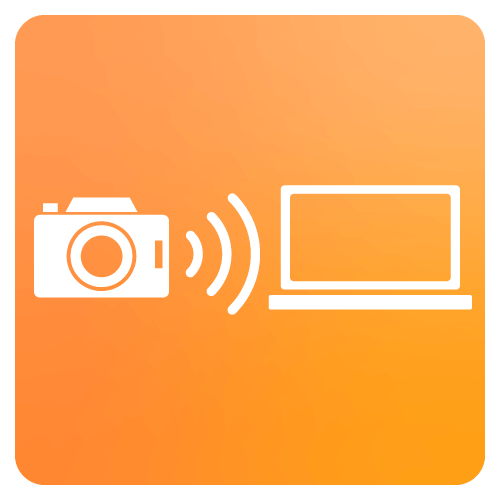
Connection options such as WLAN, NFC and Bluetooth enable wireless data transfer. They allow users to share their images directly on social media channels, control their camera via an app and upload the files to online storage. With near field communication (NFC), however, the devices must be in close proximity to each other, as the connection only extends a few centimetres.
The microphone connection

A microphone connection is especially important if users want to record a professional or semi-professional video with sound with their SLR camera. For occasional amateur videos, the built-in stereo microphone is sufficient. However, if you want professional sound recordings, you should buy an external microphone that is connected to the camera via the microphone connection. In addition, a headphone output is available to control the sound.
Video recording

Most DSLRs have a video mode for filming. Meanwhile, some models offer not only a Full HD, but even a UHD standard with up to 60 frames per second. However, those who want to record videos in 4K resolution have to dig deep into their pockets.
Accessories for more versatile and comfortable camera fun
Spare battery, charger and carrying strap are not always included in the scope of delivery of an SLR camera, yet they are indispensable. In addition, there is an almost endless mass of accessories on the camera market. But what is useful and what can consumers safely do without?
Zoom in, zoom out: lenses
Interchangeable lenses are among the most important accessories of a single-lens reflex camera. With them, the user flexibly adapts the device to different shooting situations. The lens focuses the incident light and projects an image from it, similar to the human eye. The quality of the lens has a decisive effect on the quality of the image. An image sensor only takes good pictures if the lens allows it.
Basically, three types can be distinguished:
- Wide-angle lenses: With a focal length of less than 40 millimetres, a wide-angle or large image section is created. These lenses are well suited for landscape or architectural photography.
- Normal lenses: With a focal length of 40 to 60 millimetres, the image section corresponds to the natural field of view. These lenses are suitable for low-light environments, for example.
- Telephoto lenses: With a focal length of over 60 millimetres, this is a smaller section of the image that is magnified. These lenses are good for portraits, wildlife photography and sports subjects.
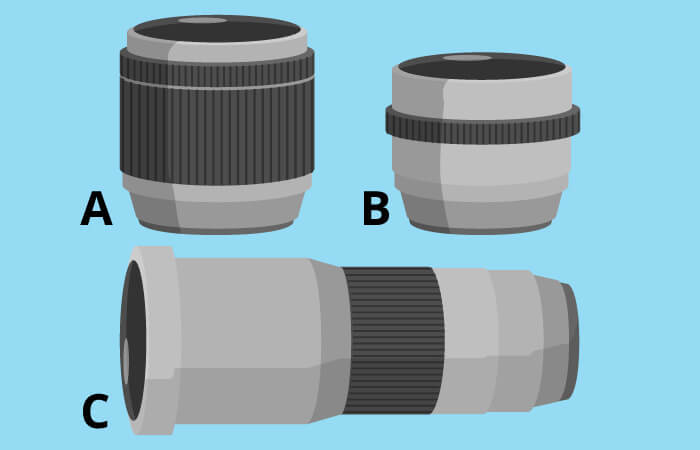
The focal length is the distance between the focal point, where the light rays are focused on the lens, and the centre of the lens. It is used by users to decide the angle of view of the camera. Changing the focal length is commonly referred to as “zooming”. A fixed, inflexible focal length lacks the ability to zoom, but in terms of image quality, it is leaps and bounds ahead of the zoom lens. They not only have better resolution, but also better edge sharpness and light intensity. Zoom lenses, on the other hand, cover a wider focal length range, allowing photographers to shoot different perspectives from one location. By zooming in, the user extends the focal length, making the subject appear larger.
From batteries to tripods: other accessories
The battery
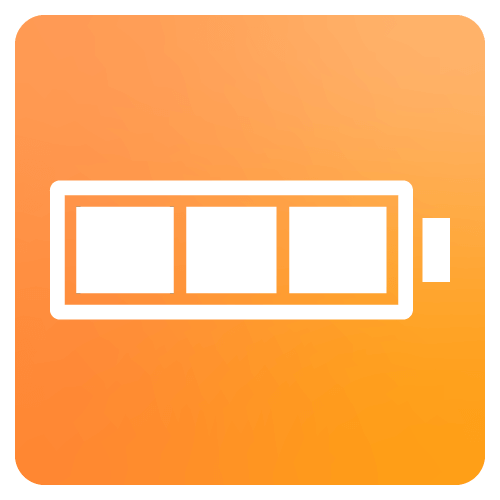
A rechargeable battery is usually included in the scope of delivery. However, if you are travelling, it is worth buying a spare battery so that the camera does not stop working at an important moment. You should be able to take at least 400 to 500 photos with one battery; powerful models can even take 4,000 photos per battery charge. Lithium-ion batteries last a particularly long time. To charge the battery, users also need a charger.
The flash unit
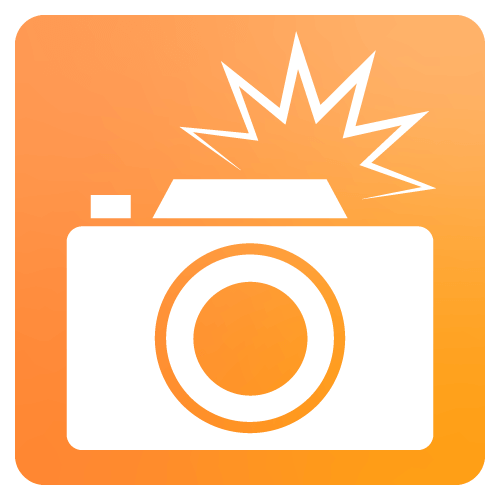
Photographers need a flash for taking pictures in the dark. Most DSLRs have a built-in flash, but external flashes usually give better results. Their luminosity is greater and the orientation of the head is flexible, so they can be rotated and swivelled. This eliminates drop shadow effects. They also prevent the red-eye effect.
The memory card

DSLRs usually only have a small built-in memory, which is only meant for a smaller number of shots at a lower resolution. With a memory card, the internal memory can be expanded by up to 128 gigabytes. At a resolution of ten megapixels, a picture has a file size of 27.8 megabytes and requires about three megabytes of storage space in JPEG format. The SD card is the most common, but professionals also use CompactFlash cards. SDHC and SDXC cards are further developments of the SD standard. All memory cards are available in classes 2, 4, 6 and 10, with class 10 offering the highest transfer rate. Memory cards from this class store ten megabytes per second.
The filters
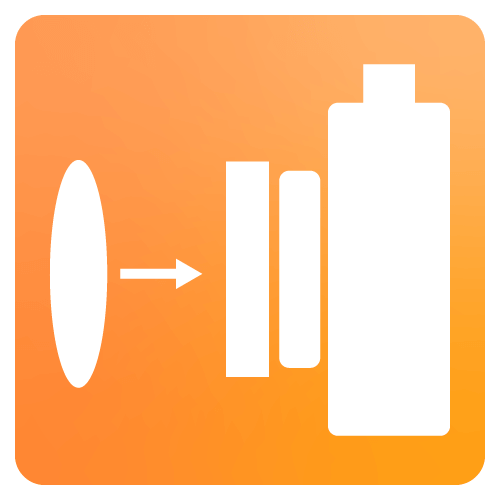
The filter of a camera is a glass pane that is clamped in front of the lens and produces various effects. Among the most useful filters is the polarising filter, which provides richer colours and reduces reflections so that mirrorless photography is possible even through glass or water. A greyscale filter also softens reflections, a star filter displays star-shaped light refractions and a colour filter only allows certain colour waves to pass through, allowing for targeted use of colour effects.
The Carrying Case

A carrying bag is worthwhile for anyone who travels a lot with their camera and attaches importance to comfortable transport. It cushions the sensitive equipment against breakage and shocks. If you don’t want to use a camera bag or a backpack, you should at least buy a carrying strap to hang the DSRL around your neck and always have it at hand. Somewhat more comfortable is a shoulder strap that allows users to hold their camera with one hand so that it does not wobble.
The tripod
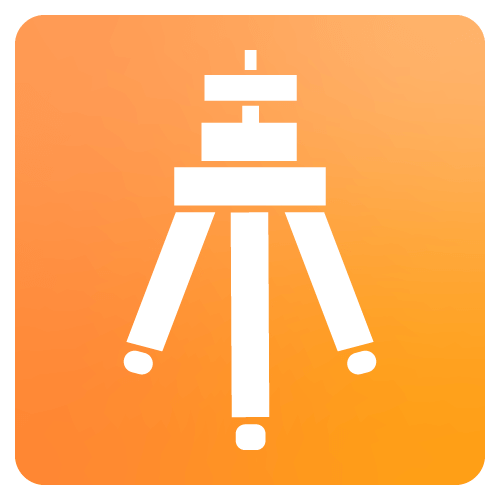
A tripod is especially useful for long exposures, large telephoto lenses or self-portraits. It stabilises the camera so that the pictures are not blurred but sharp. The spectrum of different tripod types ranges from small table tripods to long tripods. They range in height from 10 to 180 centimetres. With a telescopic function, they can also be compressed to a more manageable size. The user can move the head in all directions.

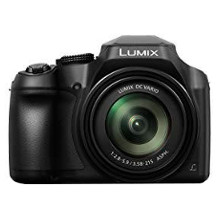
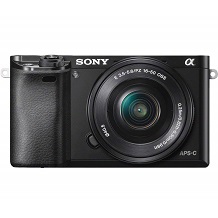
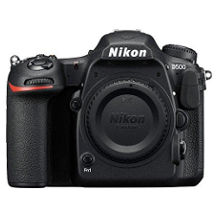
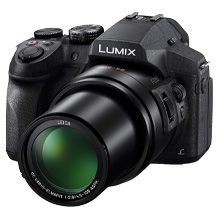
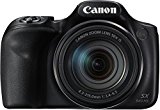
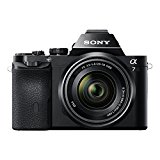
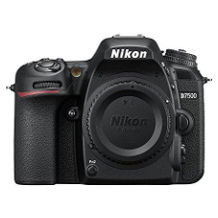
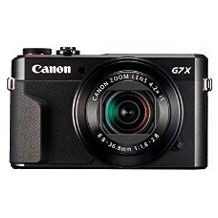
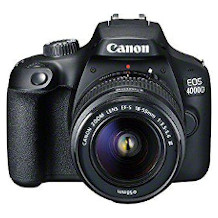

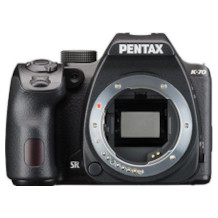
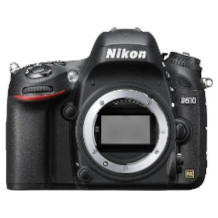
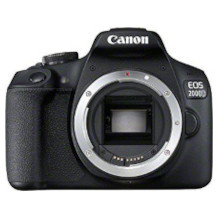
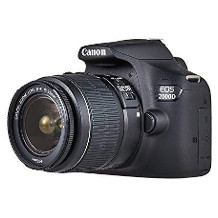
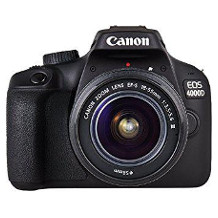
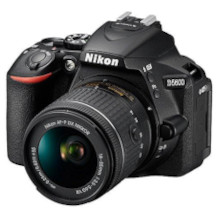
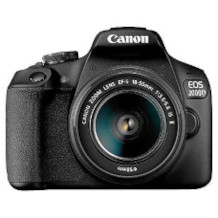
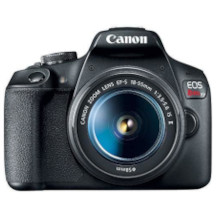
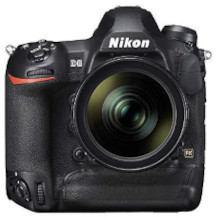
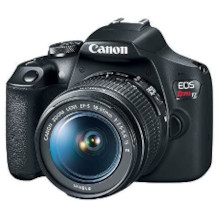
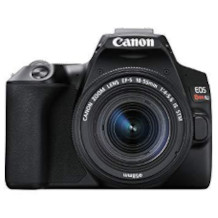
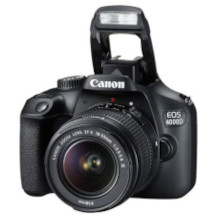

 211 reviews
211 reviews
